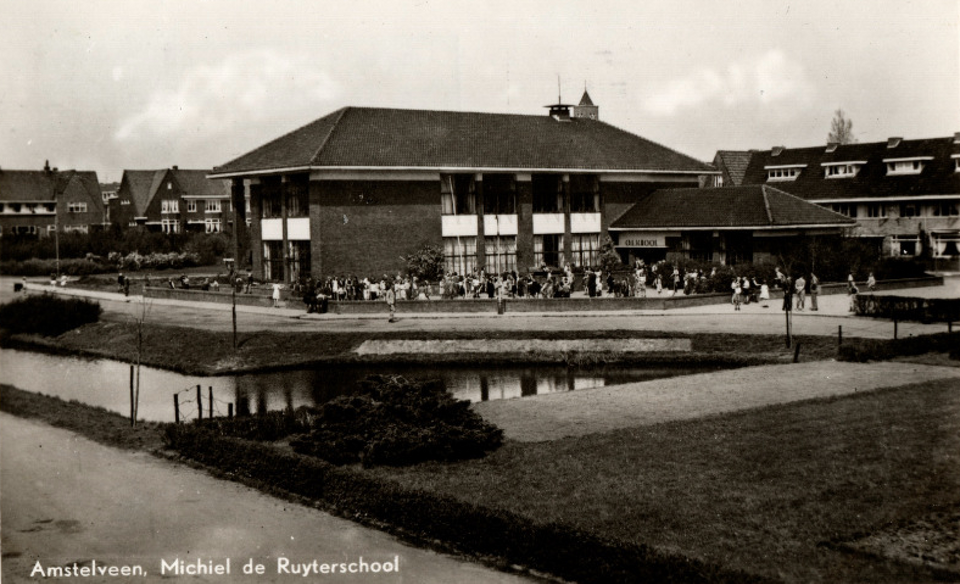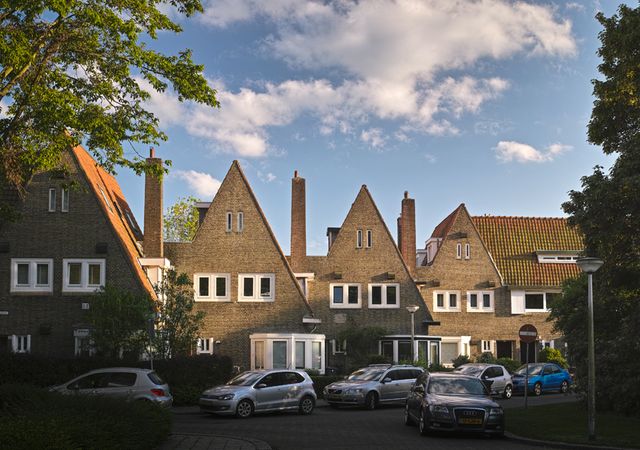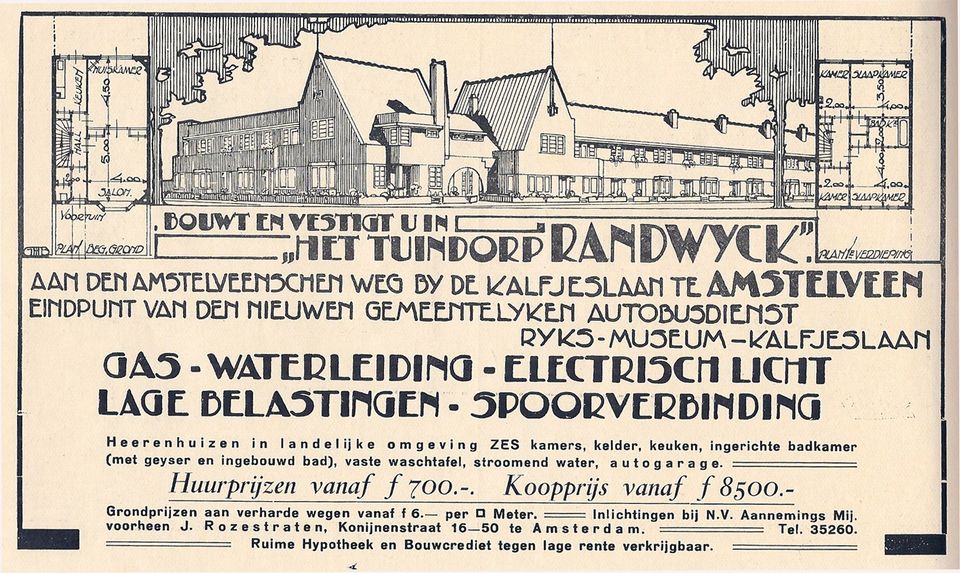
Panel 1 Villa Randwijck
Michiel de Ruijterschool
Randwijck was Amstelveen’s answer to the appetite for land in Amsterdam. Following two large annexations, Amstelveen decided to build a new district along the border with the capital. Preparations for construction in the Middelpolder started in 1921 and an advertising campaign was launched. A modern neighbourhood in the style of the Amsterdam School was built on the outskirts of rural Amstelveen. Ornate masonry and decorative details encouraged inhabitants of Amsterdam to make the switch. This garden village provided plenty of space for light and air. This transparency can also be seen in the primary school on the corner with the Catharina van Clevepark, built in the 1930s. Now it functions as the Villa Randwijck community centre, but at the time it was known as the ‘glass school’.
The ‘Black Village’
The new g…
Michiel de Ruijterschool
Randwijck was Amstelveen’s answer to the appetite for land in Amsterdam. Following two large annexations, Amstelveen decided to build a new district along the border with the capital. Preparations for construction in the Middelpolder started in 1921 and an advertising campaign was launched. A modern neighbourhood in the style of the Amsterdam School was built on the outskirts of rural Amstelveen. Ornate masonry and decorative details encouraged inhabitants of Amsterdam to make the switch. This garden village provided plenty of space for light and air. This transparency can also be seen in the primary school on the corner with the Catharina van Clevepark, built in the 1930s. Now it functions as the Villa Randwijck community centre, but at the time it was known as the ‘glass school’.
The ‘Black Village’
The new garden village attracted commuters. They were middle-class people who could afford to work in Amsterdam and live in Amstelveen. During the Great Depression, they feared losing what they had built up. A relatively large number of Randwijck residents, therefore, voted for the NSB, which is why the neighbourhood was known as the 'Black Village'. That is just one side of the story. Randwijck also had many Jewish inhabitants and people who opposed Nazism. Johan Benders, a teacher, opened his house on the Margaretha van Borsselenlaan to those who had to go into hiding. He also arranged a lot of other safe houses. When he was caught, he killed himself to prevent the Nazis getting those addresses out of him.





